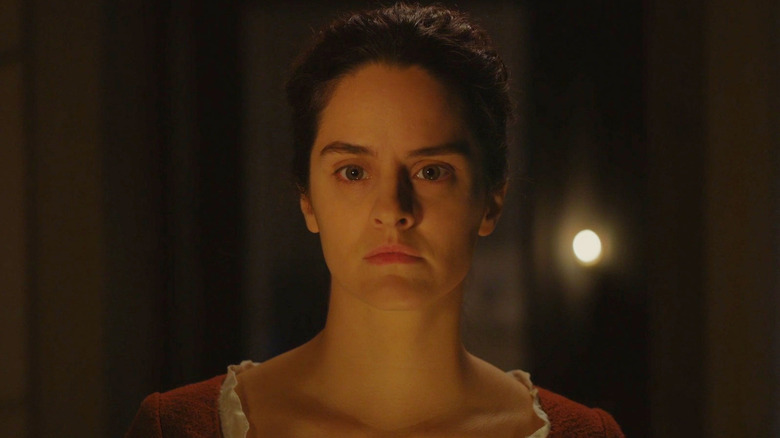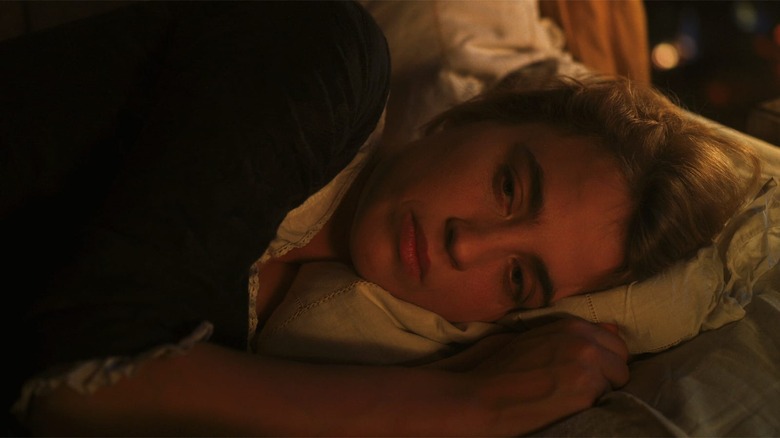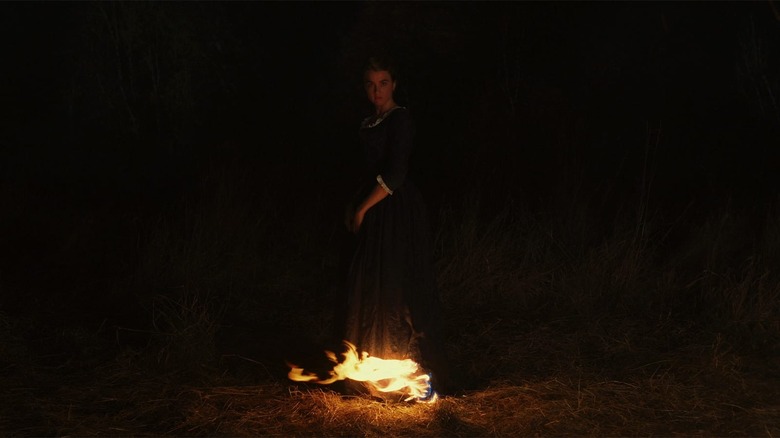Portrait Of A Lady On Fire Learned An Important Lesson From Stanley Kubrick's Barry Lyndon
Céline Sciamma's "Portrait of a Lady on Fire" is not only a heart-wrenching romantic drama featuring two revelatory performances, but it's also a visually stunning film as beautiful as the love story within it. Although the titular painting is worth the price of admission alone, the cinematography — which was wrongfully snubbed at the Oscars — is worth admiring in the same way. From the pastel colors to the dimly lit night sequences, "Portrait of a Lady on Fire" is a mesmerizing sight that tells its story just as efficiently as any piece of dialogue does (and in some instances, more effectively). Perhaps unsurprisingly, the filmmakers behind "Portrait of a Lady on Fire" looked to another revered period piece for their lighting philosophy, namely Stanley Kubrick's "Barry Lyndon."
"Portrait of a Lady on Fire" takes place during the 18th century, a point in time that sees Marianne (Noémie Merlant) and Héloïse (Adèle Haenel) fall in love on an isolated French island. Their separation from the rest of society plays to the advantage of the film's themes about longing for love, which become a distant memory memoralized by the titular painting. The film's story inherently benefits from a naturalistic aesthetic, but lighting a movie using candles could only get the filmmakers so far. Sciamma, working with cinematographer Claire Mathon, had to get creative in lighting the candle-lit sequences in "Portrait of a Lady on Fire."
'It feels so true'
In a 2020 interview with Vox, Céline Sciamma explained her crew had to be "very inventive" when it came to lighting "Portrait of a Lady on Fire," especially when candles were involved in a scene:
"Period pieces are all about choosing what you're going to do with the candles. And a character walking with a candle took so much [light] around. Sometimes the actors, they couldn't move. They were surrounded with rope lights that were invented by the camera crew. You invent your own way of lighting things, which is a lesson you can learn from [Stanley] Kubrick's 'Barry Lyndon,' where he actually invented optics to find the right candle lighting [...] And it's pretty radical in a way, because it's not naturalistic, yet it feels so true."
With "Barry Lyndon," Stanley Kubrick and cinematographer John Alcott figured out that lighting a period piece using only candles was an option made possible through the use of NASA-grade lenses. Although some scenes required an extra modern touch to get the final look, an ultra-realistic aesthetic was achieved. "Portrait of a Lady on Fire" may not use the same optics, but it's clear Sciamma was equally determined to get a picture-perfect frame. The candle-driven lighting is a choice that speaks to the setting, but it also naturally transitions the audience to the defining image of the film.
Lighting the flame
Though a period piece, "Portrait of a Lady on Fire" was shot digitally to capture the totality of the colors in front of the camera. The norm is to use a camera that shoots on film, but distancing the audience from the story is not the intention here. The combination of different, modern techniques is no coincidence, either. We experience every moment of Marianne and Héloïse's ill-fated romance through an intimate lens that paints a picture more lively than any painting present in the film. As with "Barry Lyndon," the aesthetic goes hand-in-hand with telling the story and its most memorable moments.
In a non-literal sense, the artificial orange hues of fire create an atmosphere that incites the flame that enraptures the dress Héloïse wears around the bonfire. That scene, among many others, is propelled by the sense of realism created by the filmmakers. The audience lives in the moment along with the protagonists in a reality not mucked up by any filmmaking intended to separate us from the time period. And while projects like "The Revenant" succeeded in using strictly natural lighting, Céline Sciamma manages to create a realistic, captivating visual aesthetic in "Portrait of a Lady on Fire" without resorting to grueling extremes.


